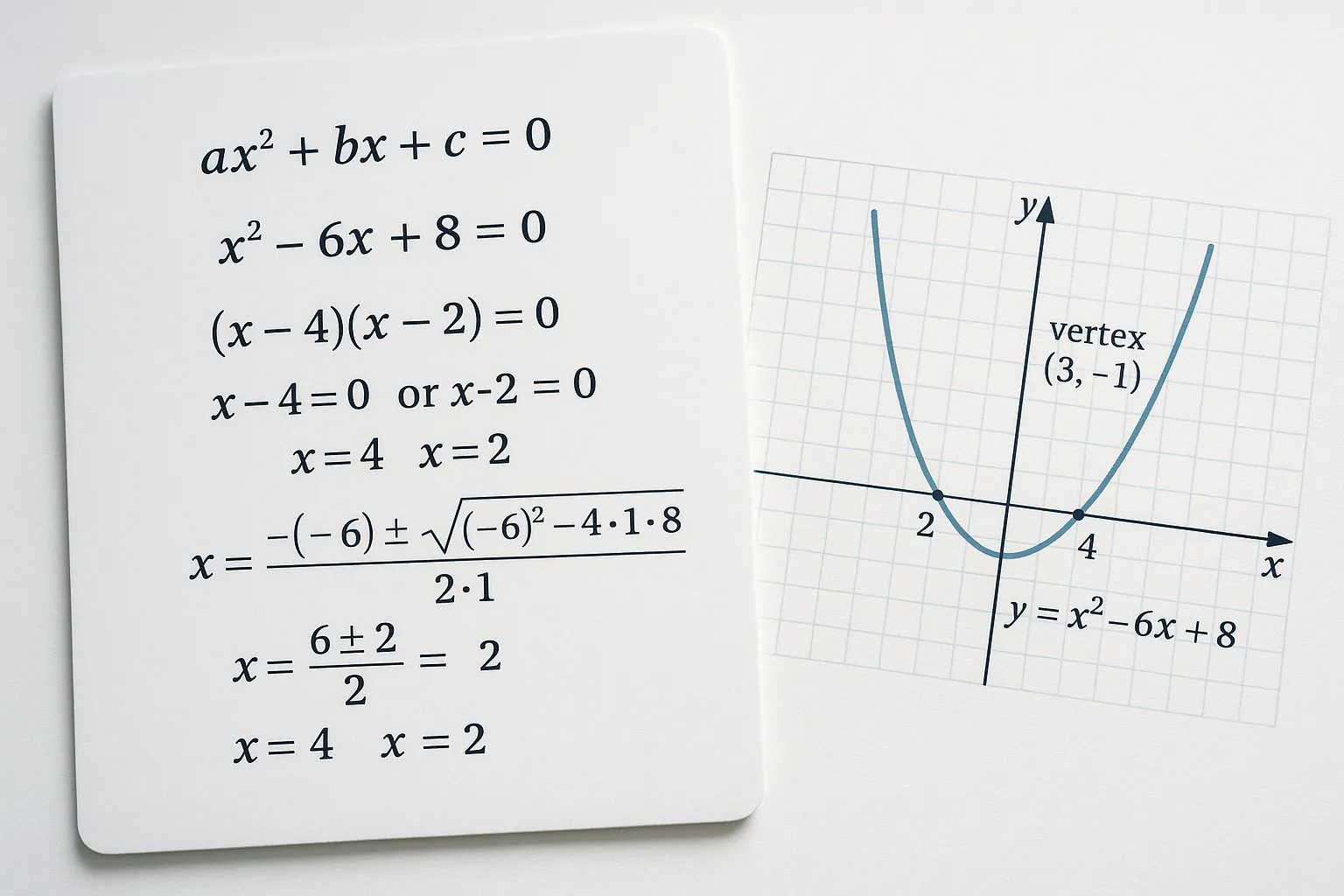Scientific Quadratic Equation Solver with Steps and Graph

Scientific Quadratic Equation Solver
Solve any quadratic equation with step-by-step solutions and interactive graph visualization
Enter Coefficients
Solution
Scientific Quadratic Equation Solver – Complete Guide with Steps and Graph
Quadratic equations are fundamental in mathematics and appear in various fields such as physics, engineering, finance, and computer science. A quadratic equation has the form:
ax² + bx + c = 0
Where:
- a = coefficient of x² (cannot be 0)
- b = coefficient of x
- c = constant term
A Scientific Quadratic Equation Solver not only calculates the roots but also provides step-by-step solutions and a graphical representation to help you understand the behavior of the quadratic function.
Understanding Quadratic Equations
- Roots (solutions): Values of x that satisfy the equation.
- Discriminant (D): Determines the nature of roots.
- Vertex: The maximum or minimum point on the parabola.
Graph: Visualizes how the quadratic function behaves.
How the Calculator Works – Step by Step
Step 1: Enter Coefficients
- Coefficient a (x²) – Must be non-zero. Example: 1
- Coefficient b (x) – Example: -3
- Constant c – Example: 2
Step 2: Calculate the Discriminant
The discriminant (D) is calculated using:
D = b² – 4ac
Interpretation:
- D > 0 → Two distinct real roots
- D = 0 → One repeated real root
- D < 0 → Two complex roots
Step 3: Solve for Roots
Using the quadratic formula:
Root 1 = (-b + √D) / (2a)
Root 2 = (-b – √D) / (2a)
- If D < 0, the calculator returns complex roots:
Root 1 = (-b + i√|D|) / (2a)
Root 2 = (-b – i√|D|) / (2a)
Step 4: Calculate the Vertex
The vertex gives the highest or lowest point of the parabola:
x_vertex = -b / (2a)
y_vertex = a*(x_vertex)² + b*(x_vertex) + c
Step 5: Plot the Graph
The graph shows:
- Parabola shape (upward if a > 0, downward if a < 0)
- Intersection with x-axis (roots)
- Intersection with y-axis (c)
Vertex (maximum or minimum)
Formula Summary
- Discriminant:
D = b² – 4ac
- Roots:
x = (-b ± √D) / (2a)
- Vertex:
x_vertex = -b / 2a
y_vertex = f(x_vertex) = a*(x_vertex)² + b*(x_vertex) + cGraph: Plot f(x) = ax² + bx + c
Real-Life Examples
Example 1 – Two Distinct Real Roots
Equation: x² – 3x + 2 = 0
- a = 1, b = -3, c = 2
- Discriminant: D = (-3)² – 412 = 1
- Roots:
Root 1 = (3 + 1)/2 = 2
Root 2 = (3 – 1)/2 = 1
- Vertex:
x_vertex = 3/2 = 1.5
y_vertex = 1*(1.5)² – 3*1.5 + 2 = -0.25
Graph shows parabola crossing x-axis at 1 and 2, vertex at (1.5, -0.25).
Example 2 – Repeated Root
Equation: x² – 4x + 4 = 0
- D = (-4)² – 414 = 0
- Roots: x = 2 (repeated)
- Vertex: (2, 0)
Example 3 – Complex Roots
Equation: x² + x + 1 = 0
- D = 1² – 411 = -3
- Roots:
Root 1 = (-1 + i√3)/2
Root 2 = (-1 – i√3)/2
Graph does not intersect x-axis; vertex = (-0.5, 0.75)
Frequently Asked Questions (FAQs)
D > 0 → two real roots
D = 0 → one repeated root
D < 0 → two complex roots
Popular Calculators

Cooking Measurement Converter – Cups, Ounces, Milliliters, Grams & More

Hourly to Salary Converter – Calculate Annual Income

Corrected Calcium Calculator | Accurate Serum Calcium Interpretation

BUN to Creatinine Ratio Calculator | Assess Kidney Function

Fraction to Decimal Converter

